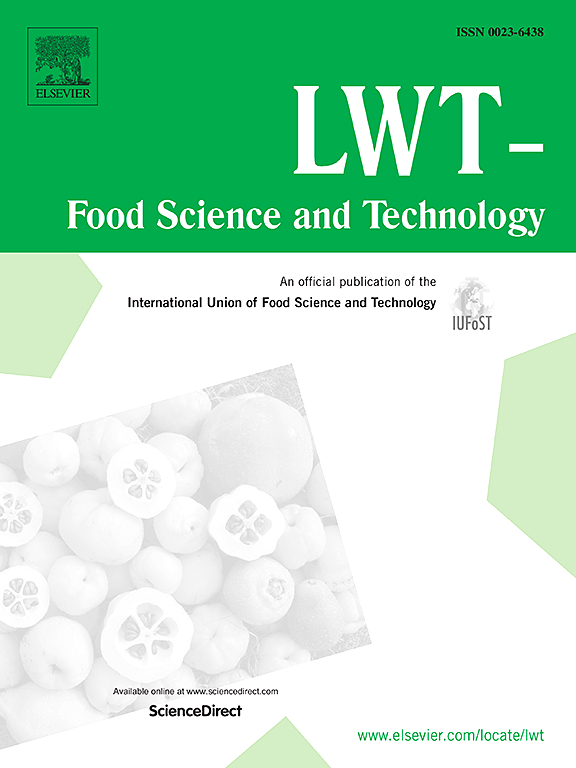Interactions of black carrot concentrate powder as a natural coloring agent with gelatine and sucrose in model gummy samples
IF 6
1区 农林科学
Q1 FOOD SCIENCE & TECHNOLOGY
引用次数: 0
Abstract
With growing consumer concerns about the sustainability and safety of synthetic food colorings, the food industry is increasingly turning to natural colorants derived from plants. Anthocyanins from black carrots are preferred as natural food colorants in the food industry. However, the product composition in which the colorants are used affects the pigments' color properties and stability behaviors. This study aims to determine the interaction between black carrot juice concentrate powder (BCCP) with gelatine and sucrose for model gummy samples and to develop models for the optimal composition of the product. Hardness (9.90–21.77 N), resilience (0.61–0.82), cohesiveness (0.95–0.98), springiness (0.27.5–0.63 mm), gumminess (9.63–21.30 N), and chewiness (3.15–13.36 Nxmm) properties of model gummy samples were determined by texture profile analysis. TPC values for gummy candy samples ranged from 6.87 to 44.3 mg GAE/kg, while inhibition values for AAC were 0.00%–13.4%. BCCP x gelatin and BCCP × sucrose interactions were determined to be significant for texture parameters such as hardness, gumminess, chewiness, and L∗, a∗, b∗, and chroma values (P < 0.05). The optimal composition for samples was determined as 32.03 g/100 g sucrose, 21 g/100 g gelatin solution, and 0.27 g/100 g BCCP, respectively, by considering changes in hardness, springiness, hardness variation and ΔE∗ values at the end of accelerated shelf-life (ASL) conditions. Incorporating polyphenol-containing BCCP affects gummies' colour stability and texture.
求助全文
约1分钟内获得全文
求助全文
来源期刊

LWT - Food Science and Technology
工程技术-食品科技
CiteScore
11.80
自引率
6.70%
发文量
1724
审稿时长
65 days
期刊介绍:
LWT - Food Science and Technology is an international journal that publishes innovative papers in the fields of food chemistry, biochemistry, microbiology, technology and nutrition. The work described should be innovative either in the approach or in the methods used. The significance of the results either for the science community or for the food industry must also be specified. Contributions written in English are welcomed in the form of review articles, short reviews, research papers, and research notes. Papers featuring animal trials and cell cultures are outside the scope of the journal and will not be considered for publication.
 求助内容:
求助内容: 应助结果提醒方式:
应助结果提醒方式:


